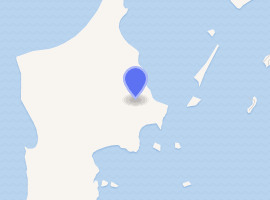Wiebbe Hayes Stone Fort
The Wiebbe Hayes Stone Fort on West Wallabi Island (also known as Wiebbe Hayes Island) is the oldest surviving European building in Australia and was built by survivors of the Batavia shipwreck and massacre.[1] West Wallabi Island is 63 km (39 mi) from the coast of Western Australia.
| Wiebbe Hayes Stone Fort | |
|---|---|
The fort in 2001 | |

| |
| General information | |
| Type | Defensive structure |
| Location | West Wallabi Island |
| Country | Australia |
| Coordinates | 28°27′41″S 113°42′15″E |
| Construction started | 1629 |
| Official name | Ruins of Two Stone Huts |
| Type | Heritage Council |
| Designated | 31 July 1995 |
| Part of | Houtman Abrolhos Islands |
| Reference no. | 3990 |
Australian National Heritage List | |
| Official name | Batavia Shipwreck Site and Survivor Camps Area 1629 |
| Type | Historic |
| Criteria | A, C, D, G |
| Designated | 6 April 2006 |
| Reference no. | 105887 |
.jpg)
History
Following the Batavia shipwreck in 1629, a group of the marooned soldiers under the command of Wiebbe Hayes, a dutch officer, were put ashore on West Wallabi Island to search for water. A group of mutineers who took control of the other survivors left Hayes' group there secretly hoping that they would starve or die of thirst. However the soldiers discovered that they were able to wade to East Wallabi Island, where there was a fresh water spring. Furthermore, West and East Wallabi Island are the only islands in the group upon which the tammar wallaby lives. Thus the soldiers had access to sources of both food and water that were unavailable to the mutineers.
Later the mutineers mounted a series of attacks, which the soldiers repulsed. The remnants of improvised defensive walls and stone shelters built by Wiebbe Hayes and his men on West Wallabi Island are Australia's oldest known European structures,[2][3] more than a century and a half before expeditions to the Australian continent by James Cook and Arthur Phillip.[1] The remnants of "the fort ... [are] nothing more than a tiny, sandstone-coloured rectangle in the scrub about 100 metres [110 yd] from the sea. It is unimpressive and isolated and yet this simple structure, just some loose rocks piled up to make a simple fortress, is the first building Europeans constructed in Australia."[1]
See also
- List of the oldest buildings in the world
References
- Elder, Bruce (30 July 2005). "The brutal shore". The Sydney Morning Herald. Retrieved 7 March 2020.
- "Batavia". Australian Broadcasting Corporation. 2003. Retrieved 7 March 2020.
- "National Heritage Places - Batavia Shipwreck Site and Survivor Camps Area 1629 - Houtman Abrolhos". Department of Agriculture, Water and the Environment, Government of Western Australia. 2020. Retrieved 7 March 2020.
Further reading
- Parry, Chris (27 July 2015). "Echoes of history in WA's Abrolhos Islands". The West Australian. Retrieved 16 May 2020.
- Ariese, Csilla E. (2010). A Twisted Truth – The VOC ship Batavia: comparing history & archaeology (PDF) (BA Thesis). Gothenburg: Göteborgs Universitet. Retrieved 16 May 2020.
- "Beardman jug, excavated from the wreck site of the BATAVIA – History". Australian National Maritime Museum. 2018. Retrieved 16 May 2020.
- Bevacqua, B. (1974). The Slaughter Point Site: An Archaeological Investigation of a Site Associated with the Batavia Shipwreck (PDF) (Report). Department of Maritime Archaeology, Western Australian Museum. Retrieved 16 May 2020.
- Beasley, Carolyn (6 February 2020). "Australia's new national park: the Houtman Abrolhos Islands". Australian Geographic. Retrieved 16 May 2020.